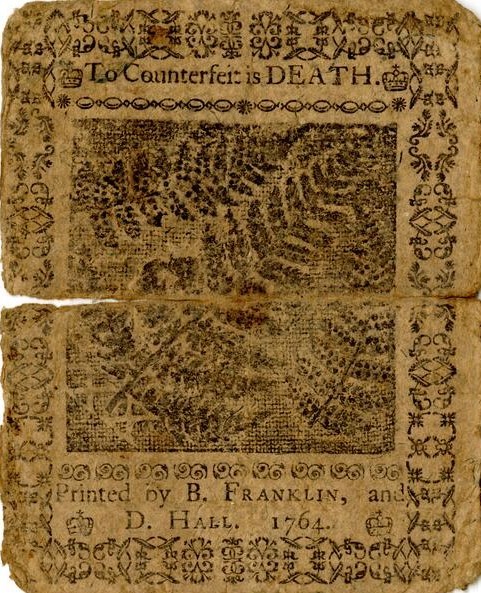Bucking the Counterfeiters: The Science Behind Franklin's Money Printing
Wednesday, January 17, 2024
6:00 p.m. ET (reception at 5:30 p.m.)
Benjamin Franklin Hall
427 Chestnut St.
Philadelphia, PA, 19106
Free and open to the public.

Paper money in colonial America relied on the skill of its printers and reputation of its creditors for its value. Benjamin Franklin fought against money counterfeiting in pre-Federal America by inventing new printing methods and production measures. Khachatur Manukyan and his team at the Nuclear Science Laboratory in the Department of Physics and Astronomy at the University of Notre Dame have conducted a comprehensive scientific analysis of 600 paper money notes printed from 1709 to 1790 provide a unique perspective into Franklin’s ingenious ways for safeguarding bills, their materials, and historical instances of money manufacturing.
Dr. Manukyan will join us on Franklin's 318th birthday to discuss the methods his team used to analyze pre-Federal American paper money from the Rare Books and Special Collections of the Hesburgh Library at the University of Notre Dame. Their investigation of the chemical compositions of the paper fibers, the inks, and fillers made of special crystals in the bills revealed previously unknown ways that Franklin developed to safeguard printed money notes against counterfeiting. Franklin used natural graphite pigments to print money and developed durable “money paper” with colored fibers and translucent muscovite fillers, along with his own unique designs of “nature-printed” patterns and paper watermarks.
Khachatur Manukyan is a Research Associate Professor at the Nuclear Science Laboratory in the Department of Physics and Astronomy at the University of Notre Dame. He obtained his Ph.D. in Physical Chemistry from Yerevan State University in Armenia in 2006. Following his doctorate, he held positions at Yerevan State University, the Institute of Chemical Physics at the National Academy of Sciences of Armenia, and the Swiss Federal Laboratories for Materials Science and Technology in Dübendorf. In 2010, Manukyan was awarded a Fulbright Visiting Scholar position at the Department of Chemical and Biomolecular Engineering at the University of Notre Dame. By 2013, he had become a research associate in the Department of Physics and later transitioned to the role of Research Assistant Professor.
Manukyan's research focuses on unraveling the complexities of novel material creation, where the domains of material science, chemistry, and physics overlap. He is fascinated by the rapid physical and chemical processes that lead to significant structural changes, such as rapid phase transitions, amorphization, and crystallization. Apart from contemporary materials, Manukyan is also interested in the structure, composition, and preparation methods of ancient artifacts, such as artworks, medieval manuscripts, historical documents, and even paper money. Through these ancient artifacts, he aims to establish a deep connection with our ancestors, shedding light on the materials they skillfully used and the techniques they mastered. In doing so, he creates a juncture where history and science meet.
